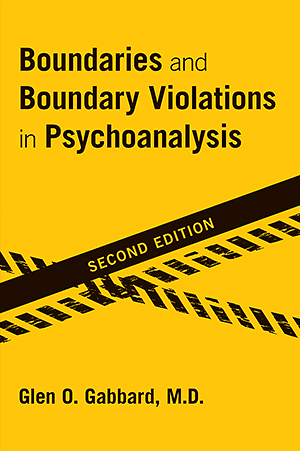Chapter 11.Prevention
Sections
Excerpt
Since the first edition of this book appeared, there have been educational efforts in a variety of settings to raise consciousness about the universal risk of boundary transgressions. Panels on boundary violations have occurred at meetings of analytic organizations. Most psychoanalytic institutes have developed seminars to teach the knowledge base about how these boundary violations develop and what can be done to prevent them. There have been far greater institutional awareness and improved reporting. Nevertheless, sexual transgressions with patients continue to occur on a regular basis, often among analysts and therapists who are well regarded and thoroughly familiar with the risks and dynamics of boundary issues. As a result, I have become increasingly pessimistic about our capacity to prevent the occurrence of sexual relations between individuals who practice psychoanalysis and their patients. I am even more pessimistic about preventing nonsexual boundary violations, which are nevertheless destructive and exploitative in light of the capacity for rationalization. Personal analysis, education, and the use of consultants have undoubtedly prevented some clinicians from transgressing sexual boundaries, and these efforts certainly must continue. However, my former optimism has waned because the capacity for self-deception is extraordinary. Using the “mental gymnastics” described in Chapter 3, analysts can manage to conceptualize how their situation is different from those colleagues who have had sexual boundary violations, and how in their particular case, no harm is being done. Moreover, the ethics research noted in Chapter 3 clearly indicates that we human beings have a tendency to see our own transgressions in a different light from those of others. Finally, the fluidity of superego functioning and its context dependence allows even ethical practitioners to find that they are exceptions because of special circumstances.
Access content
To read the fulltext, please use one of the options below to sign in or purchase access.- Personal login
- Institutional Login
- Sign in via OpenAthens
- Register for access
-
Please login/register if you wish to pair your device and check access availability.
Not a subscriber?
PsychiatryOnline subscription options offer access to the DSM-5 library, books, journals, CME, and patient resources. This all-in-one virtual library provides psychiatrists and mental health professionals with key resources for diagnosis, treatment, research, and professional development.
Need more help? PsychiatryOnline Customer Service may be reached by emailing [email protected] or by calling 800-368-5777 (in the U.S.) or 703-907-7322 (outside the U.S.).



